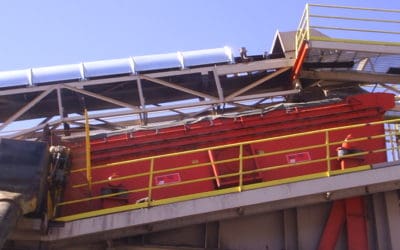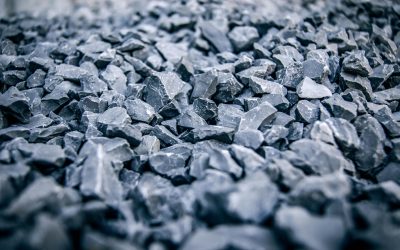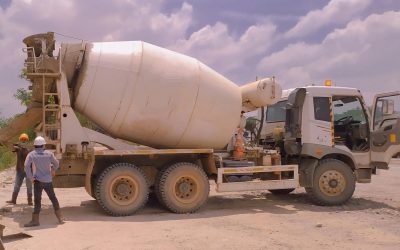Due to its composition, variability, and tendency to retain moisture, screening slag presents unique challenges that can hinder efficiency and lead to costly delays. However, innovative screening technologies, like the BIVITEC vibrating screen, are designed to tackle these issues.
Understanding Slag Processing and Its Benefits and Challenges
Slag is a byproduct formed during the smelting and refining processes of metals, like steel, iron, copper, or other non-ferrous metals. It’s primarily composed of impurities, metal oxides, and fluxes, which are materials added to remove impurities.
Slag is usually screened to separate materials of different sizes, helping to:
- Recover valuable metal fragments
- Prepare slag for further processing or recycling
- Create specific particle sizes for construction or industrial applications, such as cement production, soil conditioning, or aggregate for road building
However, this process presents several challenges.
Diverse Compositions and Particle Sizes
Slag’s complex composition poses challenges in separating valuable components from waste. Additionally, slag particles range widely in size, from fine dust to large chunks, complicating the screening process.
The BIVITEC screen addresses these challenges of slag recovery and recycling with the help of its dual-motion screening method, combining linear and elliptical motion. This innovative design enables efficient separation of materials with diverse compositions and sizes. It also ensures precise particle separation, minimizing the risk of oversized particles or fines passing through the screen.
Hard and Abrasive Nature
Slag often contains hard and abrasive materials that can cause significant wear on screening equipment. Over time, this can lead to increased maintenance costs and reduced lifespan of the machinery.
The BIVITEC screen is built to handle abrasive materials, and its elliptical motion helps reduce the friction between the material and the screen, minimizing wear and tear.
Moisture and Clumping
Some slag – particularly when cooled or mixed with water – can retain moisture, leading to clumping or aggregation of particles. This makes the screening process less efficient, as clumps may block the screens, resulting in improper separation and reduced capacity.
The BIVITEC is able to break up clumps and minimize material buildup, reducing the need for frequent cleaning and downtime.
Dust Generation
This process may generate significant amounts of dust, particularly when dealing with finer particles. This dust can be harmful to both workers’ health and the environment if not properly controlled.
The BIVITEC screen’s design reduces the potential for dust generation.
Energy Consumption
The process of slag screening can be energy-intensive, particularly when dealing with larger quantities or harder materials. But the BIVITEC’s energy-efficient design can lower operational costs.
For industries seeking to maximize the value of slag (whether through recycling, material recovery, or aggregate production), the BIVITEC vibrating screen is a reliable and cost-effective choice. With its ability to handle tough materials and deliver consistent results, it transforms slag screening from a challenge into an opportunity for operational excellence.
If you have any questions about the BIVITEC, please don’t hesitate to contact us.


